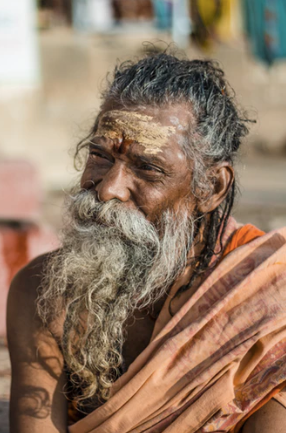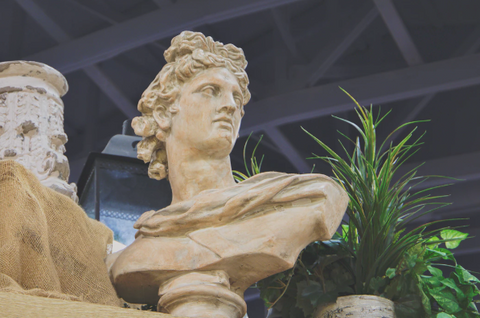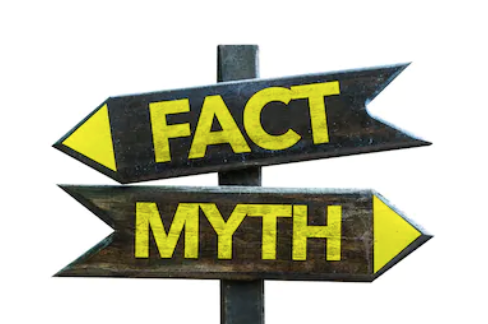Religious, Historical & Current Usage of Loose-Leaf

Loose-leaf in its current form has several uses, ranging from medicinal, industrial and recreational. While most people associate the bud with recreational use, cannabis’ historical and religious usage seems to suggest otherwise, with several civilizations spanning the world having records of medicinal, religious and recreational use of loose-leaf along with illustrations of the same.
Accounts vary on when humans started consuming pot for recreational use, but it’s widely accepted that it has been used for its medicinal uses for millennia, with it being used to treat issues like inflammation, malaria, gout etc. Loose leaf had been used in varying degrees across different civilizations for different purposes. Many Siberian and Shaman graves from as early as 500BC had burned cannabis seeds, while Japanese, Chinese and Indian civilizations and monarchies have seen sustained pot use since several millennia.
Hinduism
The Vedas, a religious text sacred to the Hindus, has repeated references to the word bhanga, which is now known as Bhang, a modern concoction containing cannabis; ground into and stirred with curd and sugar. Indians collectively drink bhang during the festival of Holi, also known as the festival of colors and springtime, marking the arrival of spring and end of winter. The festival is closely tied to the Hindu gods of Vishnu, Parvati and Shiva. The use of bhang is commonplace during the festival.

Use of pot is more common among Sadus (Holy men) in Hinduism
Otherwise, use of loose leaf has been consistent and abundant in India through the ages, particularly among the Sadu’s (Holy person), but also among the common class. In the 1800s, the British tried to quell the use of pot among Indians despite cultivating and exporting hemp for profit. However, the ban was unsuccessful, and the British concluded in their reports that excessive use of the substance was uncommon, and grievous side effects were almost never found (source).

Shiva is often associated with cannabis.
The most striking manifestation of marijuana in Hinduism is through the God Shiva. Commonly regarded as the God of destruction, despite such an image, Shiva is known to be an avid hashish user, frequently inhaling the drug through a pipe, as illustrated in sacred texts and images. Hinduism is a vast religion with more than 100,000 gods, but Shiva has a large number of devotees among Hindus. Despite this, cannabis was criminalised in the 70s in India due to US pressure, and while the implementation of its illegality is sparse and the use of Bhang is legal in some states (through government-run shops no less), the illegality of pot means that the quality available is poor, not to mention adulterated to a large extent.
With sustained historical and religious use of Marijuana in India, it only makes sense that consumption of cannabis should be under the Hindu religions act.
Islam
While the Quran prohibits the use of Alcohol and other substances, the lack of specificity with regards to pot meant that Muslims have historically used hashish to get high. First found in Persia, the usage of hash became more common after its introduction to the Arab world sometime in the early 1000s. Up until the introduction of tobacco, especially in its smokable form, hashish was usually ingested as an edible among Muslims. Around the 1500s, with the widespread use of tobacco, hash was smoked instead. Unfortunately, vaping wasn’t a thing back then.
Afghanistan is a good example of how widespread hash usage is among Muslim majority countries, with the country being one of the largest exporters and producers of hashish and opium in the world, with its potency being reveled and upheld as one of the best in the world. With punishing weather and terrain, it isn’t surprising that Afghanis choose to spend their free time in the warm embrace of pot, which is easy to grow in their soil and weather.
Indian and Arabic travelers introduced pot in Africa, which, slowly but steadily trickled down to Southern Africa.
Roman/Greek Empires and their research
If there’s anything we know about the Roman and Greek empires, its that a lot of information about their legacy that’s distributed can be misleading. However, one thing we do know is that they did use Cannabis for its medicinal effects and possibly for recreational purposes too. While a thorough understanding of the extent of the use of cannabis during the rule of the Greek Empire is unknown, a few historians like Herodotus were aware of Cannabis and its effects. While his knowledge about medicine was limited, Herodotus, a traveller, encountered Scythians who would tent up and burnt cannabis seeds and get high. Basically, Scythians were the first to hot-box.
Dioscorides, a Roman Botanist of Greek origin, is known for writing the medical journal De Materia Medica, in which he states that “Kannabis” was “used for the twisting of very strong ropes, (is) of a bad scent (insect repellent), (has) long stalks, and an empty and round seed” which was used as a sexual suppressant when its seeds were eaten and that it proved to be an excellent form of treatment for earworms. These texts included numerous illustrations of the plant, allowing us to prove its veracity while also understanding his findings for each type of plant he researched.

Dioscarides, a Roman botanist of Greek descent,
documented the effects of Cannabis
Caludius Galen, another Roman of Greek descent, wrote extensively about cannabis and its effects on people. Looking at things from a social/recreational angle, Claudius observed that consumption of hemp in moderation led to feelings of happiness and “hilarity”, but to impotence and severe headaches in excess.
The U.S.
The history of loose leaf in the US is complex and multi-faceted, despite how short it is. While it wasn’t used recreationally until Mexican citizens immigrated to the US in the early 1900s, industrial hemp was grown, imported and exported almost throughout the US till about the 1800s. Hemp was so widespread that the constitution of the US was written in hemp. Well, at least the first drafts of it were. That sounds unimaginable right now, but hemp had(has) many uses, and despite it being derived from cannabis, hemp is mostly used for its versatility as building material, paper, textile use, food and more.

Anyway, loose-leaf was reportedly brought to North American in the early 1500s by Spanish travellers. By the 1600s, industrialists were growing the plant for its industrial uses, mainly rope and paper. It was so widespread that it has been suggested that Thomas Jefferson and George Washington might have grown the plant themselves. Farmers in Virginia, Massachusetts and Connecticut were growing hemp in the 1600s. Legislation and governance around Marijuana were largely absent up until the early 1900s when people started smoking it recreationally for its psychoactive properties, a theme consistent throughout history, with bans and attempted bans taking place in the UK, South Africa, India and many more countries before the start of the 20th century.
Marijuana Tax Act, 1937
In 1937, the sale, possession and use of Hemp was effectively banned in the US under the Marijuana tax act of 1937. The word effectively is used as technically, cannabis wasn’t banned, but possessing or selling it became so hard that no one even bothered to try doing so. Cannabis-based medical and herbal solutions used to be sold over the counter, which rapidly dropped off after the implementation of the new law and by 1941, the sale of any cannabis-based medicine had almost completely ceased to exist. Despite this, however, hemp was allowed to be grown for industrial purposes, but the law made it so that it made little sense to do so, and by 1957, the hemp industry had all but died out.
There have been several explanations that have been offered for the introduction of the law, with some claiming that increase in recreational use due to Mexican immigrants was one of the reasons, as well as consistent use among black Jazz musicians, implying that the introduction and implementation of the law was racially motivated. Other sources conclude it is because of large business owners and conglomerates wanting to reduce the reach and size of the hemp industry.
War on Drugs
In 1970, President Richard Nixon announced a controlled substances act that was developed with the intent of tackling the drug epidemic that had spread throughout the nation, with Nixon proclaiming drugs to be the “public’s number one enemy”. However, decades after Nixon’s stint as President, his policy chief revealed that the government made sure that marijuana was associated with hippies and heroin with black people so that they could suppress all anti-war sentiment and that “we knew we were lying about the drugs”.
Cannabis was classified as a schedule one drug, which meant that cannabis consumption, according to the Federal Government, was as dangerous as indulging in LSD, cocaine, ecstasy and Heroin, with a clear indication that the loose leaf had no medicinal purposes.
The Nixon Government ignored the National Commission on Marijuana and Drug abuse’s report called “Marijuana: A Signal of Misunderstanding”. While the “war” on drugs quieted down in the mid-70s, the rise of Pablo Escobar and his multi-billion-dollar cocaine empire led to a massive crackdown on drug use in the late 70s and early 80s, led by Ronald Reagan and an intensive search, intervention and direct government involvement in Colombia and Colombian Politics. “Just say no” became a campaign and symbol for the war on drugs.

The “War on Drugs” by Nixon cracked down on cannabis use, while Reagan continued in the same footsteps,
so far as releasing a “Just say no” campaign in 1984.
Public opinion on the war of drugs is divided, with many believing it to be a waste of government resources and something the government shouldn’t have been extensively involved in. Its magnitude of success is disputed to say the least, but this war has wilted down and simmered in recent years, with over 30 states in the United States having Marijuana legal or decriminalized in some form, with the ones having legalized them turning in a huge profit on a yearly basis. Canada legalized marijuana for recreational use throughout the country in 2018.
With consistent use of cannabis across the world for recreational and medical purposes and a potential to become a multi-billion dollar industry, it seems strange that cannabis is banned throughout most of the world. Perhaps one day will come where everyone can take a toke and enjoy a beautiful day without worries, but those days lie far ahead.


